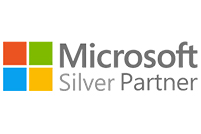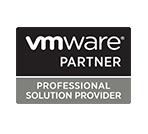Cost-efficient, light on power and cooling, slim yet still high performing, it’s no wonder that blade servers take up a huge sector of the market, not to mention, the Gen8s are still packing a great punch compared to their newer Gen9 counterparts.
Using a single rather than multiple circuit board for processor, memory and network connections alike, they’re much easier to configure and manage. More, blade servers are hot-swappable, so you can add new blades and remove existing ones while the unit is still powered up.
Once considered most suitable for larger enterprises, blades have made significant inroads into SME territory as well. The relatively low space /power/management needs are hard to ignore, as is the fact that blade servers are scalable to any physical infrastructure. The trend for virtualisation is also driving market growth.
Of course, blades are not for everybody, and are not really suitable for large scale server environments. Yet if you’re using several different servers for several different applications, combining them all into one blade server can certainly make manager’s life a lot easier.
HP is among the market leaders in blade servers, with innovative, high performance products across the Gen8 and Gen9 ranges. Cloud-ready, these support all applications on a single platform. There’s a range of storage and network options, and they’re modular, future-proof and quick to scale, repurpose and upgrade. Just follow these steps to achieving a successful Gen8 blade server installation with HP.
Choose your …
- Operating environment. HP blades use almost the same OS as other HP servers, and you can mix and match their ProLiant and Integrity components as you need. You can even run multiple operating environments in the same enclosure if you wish.
- Enclosure. For the larger data centre, go for the c7000 - 16 types of server/storage blades, twice the expansion slots and good for any application. For SMEs, it’s the c3000 – smaller, but still accommodating up to 8 servers, using standard power, needing no special air conditioning and with a wide range of small user friendly features.
In either case, HP supply all the necessary power/cooling/I/O infrastructure. Tools like Power Discovery Services and Onboard Administrator are available to make management easier, while there are wizards for rapid configuration, automatic power and cooling and agentless device health and status reporting. Each enclosure also comes with Onboard Administrator firmware.
- Interconnects. HP Virtual Connect is essential for virtualised/cloud environments, offering ‘wire-once’ connection management to simplify connectivity. You can add, move and change servers in minutes, not days, and cut network sprawl by as much as 95%. There’s also a wide choice of connectivity hardware.
- Server blades. There are units with features available to meet your needs exactly. The Gen8 range includes the entry level PL BL420c, the beautifully balanced 460c, the world’s most popular blade, and the fantastic performance and flexibility of the BL465c. And if you’re asking how many blades do you need? The answer is, how many apps, VMs and users have you got?!
- Storage infrastructure
Two big choices here. Either connect to external HP SAN (storage area network), NAS (network-attached storage)or backup – or go inside the enclosure along with your blade servers and add extra storage and data protection - without a cable! HP Converged Storage is simple, efficient and agile, making it ideal for today’s cloud/virtualised/big data environment – again, with many individual hardware storage options.
- Infrastructure management
ProLiant’s Insight Management increases efficiency and precision control of your server infrastructure, and included deployment, configuration, health, alerts, energy, power, remote management and even warranty information. Based on core components iLO Management Engine, Insight Control and Insight Online, the system has the intelligence to almost manage itself.
- Power/cooling configuration
With HP Thermal Logic you can both measure power usage and control it – a pretty neat trick. You can also double the capacity of your blades with Dynamic Power Capping and HP Insight Control, and manage all servers and storage from one console. It means you achieve the admirable objective of doing more with less –including power.
- Support services
More important than ever, given today’s rate of change. HP offers a new dimension in end-to-end support, and will work with you to design or integrate the systems you need. There’s ongoing reactive and proactive support, including HP Foundation Care, Proactive Care, Datacentre Care, Lifecycle Event Services and Proactive Insight. What’s more, these are user—friendly, cost-effective packages pitched at a variety of levels.
Compact and economical, blade servers are an incredibly efficient solution for many businesses. For more advice on blade server installation, and many other server or storage issues, contact Evaris on 0330 124 1245, or email [email protected]







